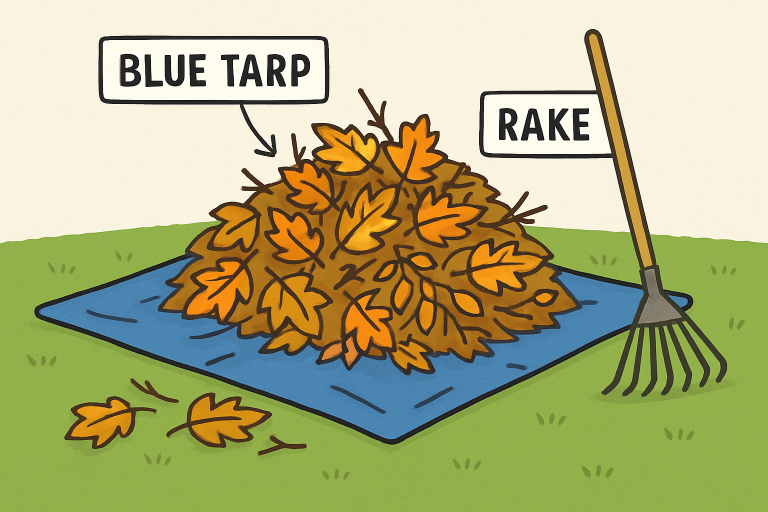
Efficient Yard Waste Removal: Harnessing the Power of Tarps
Introduction to Yard Waste Management
Maintaining a healthy, attractive yard calls for routine removal of natural debris such as leaves, sticks, grass clippings, and branches. Managing yard waste efficiently keeps your property looking neat and supports local environmental goals by reducing landfill contributions and encouraging composting. One of the most practical tools for homeowners and landscapers alike is the landscaping debris tarp—a reusable, durable solution that brings convenience and sustainability to yard maintenance.
Traditional yard cleanup methods often rely on disposable plastic bags, which can be costly and environmentally harmful. A debris lifting tarp simplifies the process by enabling quicker and easier collection, transport, and disposal of large volumes of green waste. As a result, homeowners can enjoy more efficient yard care while minimizing their ecological footprint in the long run.
Why Choose Tarps for Yard Waste Collection?
When it comes to yard waste collection, tarps offer a host of advantages over typical collection bags:
- Cost-Effective: Tarps are designed for repeated use, lessening the demand for single-use bags and lowering cleanup expenses.
- Time-Saving: Large debris areas or multiple yard tasks can be tackled more quickly as a tarp can hold a greater quantity, eliminating several trips with smaller containers.
- Versatility: Whether it’s raking, hauling, or covering, tarps can handle nearly any type of yard debris, from wet leaves and grass to prickly branches and heavy twigs.
Step-by-Step Guide to Using Tarps for Yard Waste
- Spread the Tarp: Position a tough, weather-resistant tarp on the ground, ideally close to where most debris has accumulated.
- Gather Debris: Use a rake or a leaf blower to move leaves, sticks, and other yard waste onto the center of the tarp.
- Secure the Load: Once full, fold the tarp’s corners over the pile to keep debris contained and prevent spillage during transport.
- Transport: Either drag the loaded tarp to your compost site, curbside collection spot, or disposal area. For heavy loads, ask for assistance or use a wheelbarrow.
For homeowners living in areas with frequent storms or abundant tree cover, investing in a sturdy debris-lifting tarp can be invaluable for both everyday use and emergency cleanups.

Innovative Solutions: Reusable Yard Debris Bags
If you’re seeking more structure in your yard waste efforts, reusable yard debris bags such as the Leaf Burrito® offer a reliable alternative. These innovative bags spread flat like a tarp, making it easy to pile on leaves and branches. When ready to move, zip or fasten the bag—this securely contains everything, streamlining transport and minimizing mess. Popular among landscaping professionals and eco-conscious homeowners, reusable bags like these can dramatically cut clean-up time and reduce landfill-bound plastics.
Environmental Considerations
The environmental impact of yard waste removal is significant. Disposable plastic bags often contaminate composting facilities, complicating the recycling process and threatening wildlife. Making the simple switch to reusable tarps or debris bags, you help decrease your reliance on single-use plastics. Adopting these greener methods also protects waste industry workers from potential hazards linked to bag contamination.
Some local municipalities and home improvement stores now offer sustainable lawn waste collection options, making it easier to adopt eco-friendly practices. Many cities also update guidance on acceptable waste removal bags as part of broader recycling and zero-waste initiatives.
Safety Tips
- Weight Management: Resist the urge to overload your tarp or debris bag, as excessive weight can lead to muscle strain or bodily injury.
- Proper Lifting: When lifting or pulling heavy tarps, always bend your knees and keep your back straight, using leg muscles to avoid lower-back injuries.
- Weather Awareness: Manage large tarps carefully on windy days to control and prevent accidental littering.
Conclusion
For homeowners and landscapers, tarps and reusable yard bags represent a smart investment in efficient, safe, and sustainable yard maintenance. A simple debris lifting tarp can dramatically streamline the cleanup process, spare your wallet, and protect the environment from the harms of disposable plastics. Whether you choose a basic tarp or upgrade to a proprietary reusable debris bag, these tools are essential for year-round maintaining a healthy outdoor space.



Average Rating